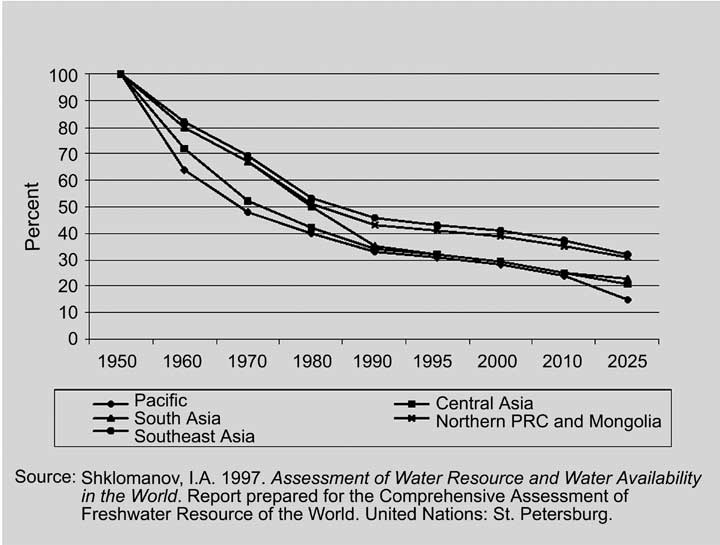conservation practices and environmental movements in general pose a development cost, mainly due to the tradeoff between a development option that can lead to economic growth and an environmental option which can reduce or mitigate the degradation.
4.2.8 Climate change, natural hazards and adaptation
The ESAP region is highly vulnerable to climate variability and change. Climate change and natural hazards, such as floods, droughts, pest attacks and diseases are important drivers of change for agriculture and AKST. The Southwest monsoon weather system which lasts from June to October dominates agricultural production, employment and human well-being. Increasing trends in temperature have already been observed in various regions of ESAP with some spatial variability. Interseasonal, interannual and spatial variability in rainfall trends have been observed in the last few decades. A decreasing trend in annual rainfall was observed in Northeast and North China, parts of northeast India, Indonesia, the Philippines and some areas in Japan. Annual rainfall shows increasing trends in western China, Changjiang Valley and along the southeastern coast of China, Bangladesh and along the western coasts of the Philippines (IPCC, 2007).
A significant acceleration in warming over that observed in the 20th century has occurred in the ESAP region (IPCC, 2007). Warming similar to the global mean is expected over Southeast Asia. However, more significant warming is projected for South Asia and East Asia.
Significant warming in future is likely over the Himalayan Highland including the Tibetan Plateau and arid regions of Asia (Gao et al., 2003). Extreme heat waves and intense precipitation are projected for South Asia, East Asia and Southeast Asia (Emori et al., 2000; Lal, 2003; Hasumi et al., 2004). Tropical cyclones/typhoons already cause significant damage to infrastructure and coastal agriculture in the |
|
ESAP region. Since generation of cyclones and typhoons are highly related to sea surface temperature, a 2 to 4°C rise in sea surface temperature could increase cyclone/typhoon intensities in East Asia, Southeast Asia and South Asia by 10-20% (Knutson et al., 2004).
4.2.8.1 Climate change and agriculture
Agricultural production in ESAP will be threatened by climatic variability and increased frequency of extreme weather events in coming decades (IPCC, 2007). Impacts to agricultural systems as a result of climate change could include degradation of land, destruction of existing crops, loss of biodiversity, changes in crop and livestock production and increased health problems due to nutritional impacts and vector distribution. However, advancements in AKST could drive new initiatives that promote adaptation to climate change.
A large area in ESAP is under rainfed agriculture. For example, in India, 60% of the land area under cultivation is rainfed. Any change in temperature, humidity and climate will have impacts on crop production. Modeling analyses suggest substantial decreases in cereal production in Asia by the end of this century. Rainfed wheat production may substantially decrease (Fischer et al., 2002) and there will be significant regional differences in wheat, maize and rice yields. In East and Southeast Asia, crop yield could increase by 20% while South Asia may experience a 30% decline in crop yield (Murdiyarso, 2000). Temperature alone could be detrimental to crop yield; in the Philippines rice grain yield declined by 10% for each 1°C increase in growing-season minimum temperature in the dry season between 1979 and 2003 (Peng et al., 2004). Sea level rise and resulting intrusion of saline water could cause significant damage to rice crops in many coastal areas especially in the mega-delta region of ESAP. Currently available rice and other crop varieties are highly vulnerable to salinity and a small change in salinity can cause significant damage to crops. Climate change may |

